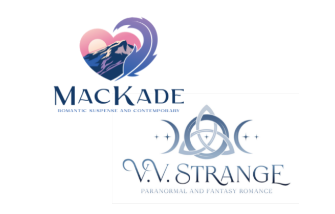I love stories with parallels like this one. Plus, that cover!
The Queen’s Spy by Clare Marchant released last month in the Historical Dual Timeline genre.
1584: Elizabeth I rules England. But a dangerous plot is brewing in court, and Mary Queen of Scots will stop at nothing to take her cousin’s throne.
There’s only one thing standing in her way: Tom, the queen’s trusted apothecary, who makes the perfect silent spy…
2021: Travelling the globe in her campervan, Mathilde has never belonged anywhere. So when she receives news of an inheritance, she is shocked to discover she has a family in England.
Just like Mathilde, the medieval hall she inherits conceals secrets, and she quickly makes a haunting discovery. Can she unravel the truth about what happened there all those years ago? And will she finally find a place to call home?
Amazon UK: https://www.amazon.co.uk/Queens-Spy-gripping-historical-fiction-ebook/dp/B08R6Q4CC9
Amazon CA: https://www.amazon.ca/Queens-Spy-gripping-historical-fiction-ebook/dp/B08R6Q4CC9
Amazon AU: https://www.amazon.com.au/Queens-Spy-gripping-historical-fiction-ebook/dp/B08R6Q4CC9
Barnes and Noble: https://www.barnesandnoble.com/w/the-queens-spy-clare-marchant/1139196760
Waterstones: https://www.waterstones.com/book/the-queens-spy/clare-marchant/9780008454357
Kobo: https://www.kobo.com/gb/en/ebook/the-queen-s-spy-2
iBooks: https://books.apple.com/gb/book/the-queens-spy/id1554626619
Audio: https://amzn.to/2QRzT2K

Author Bio:
Growing up in Surrey, Clare always dreamed of being a writer. Instead, she followed a career in IT, before moving to Norfolk for a quieter life and re-training as a jeweller.
Now writing full time, she lives with her husband and the youngest two of her six children. Weekends are spent exploring local castles and monastic ruins, or visiting the nearby coast.
Why do I write about Tudor times? With so many fascinating periods of history I’m often asked why I choose to write about the latter half of the sixteenth century, but for me it seems the most obvious choice!
I love everything about this era; there was such a huge difference between the way people lived, both in comparison to how we live now and between the rich and the poor in those days.
I’m also particularly fascinated by the sheer volatility of those times. Living in England now in an era where we have freedom of speech, it’s hard to imagine a time when an off the cuff spontaneous observation or comment could mean you finding yourself in jail or potentially with a rope around your neck (or on the block, depending on your social status!). Even the religion you followed was dictated to you by whichever monarch was on the throne, there was no choice over whether you were Catholic or Protestant, you followed whichever faith the King or Queen did. And yet people were prepared to go to their deaths and secretly continue to pray the way that they believed was correct, and to this day many old houses in England have a ‘priest hole’ where Catholics would hide a visiting priest if they were raided by the law. Harvington Hall in Worcestershire had seven such places although just one was more usual! Fig 2
The differences between the classes were so enormous, it’s fascinating to compare. The nobility and the royals had such an opulent lifestyle – they had the very best food, huge amounts of roasted meats in every variety and custards, cakes, sweetmeats. Whatever they wanted, they could have. It’s no wonder that Queen Elizabeth had toothache so often, she had a sweet tooth and was able to indulge that whenever she wanted to. At the other end of the spectrum the poor people, the agricultural labourers could only eat what they were able to grow with some sort of payment in food from their landlord. Which meant that in years when there was bad weather and the crops failed, the poor went hungry. Living in the 21st century in modern day London it’s hard to imagine how these two ends of society co-existed.
Clothing was another aspect of the Tudor lifestyle which interests me. The beautiful gowns that the ladies wore and the stunning embroidered fabrics which were the premise of the very rich. Imagine having jewels and pearls sewn onto your gown! I cannot imagine what it would have felt like to try and walk in something that must have been so heavy, and in an era when there were no easy fastenings like today, outfits would have been held together with a lot of ribbons and ties. Even sleeves had to be attached by ties, but this did give the rich the opportunity to mix and match their outfits a bit, and given how expensive they were, this would have been useful!
Unlike today when an item no longer fits, or starts to look shabby, is marked or stained, in Tudor times items of clothing would be altered or passed on to be reconstructed for someone else. Most people didn’t have the variety or number of outfits that modern day people have and what clothes they did have were so valuable to them that they would leave them to others in their wills.
I could wax lyrical about the appeal of Tudor life for pages and pages. A totally different world from the one we live in now, and yet for a lot of us, one that our own ancestors lived. And we are lucky enough to have access to artefacts that have been left to us allow us to piece together these vast contrasts between then and now. The precarious hold on life that they had, the simple illnesses that killed so easily, the appalling infant mortality rates that we cannot imagine today. The dangers in voicing an opinion that was not the ‘correct’ one to have. Everywhere lay danger and it’s a wonderful era to write about where I can (hopefully) give a little insight into how people lived their lives on a knife edge.
Twitter: https://twitter.com/ClareMarchant1
Facebook: https://www.facebook.com/claremarchantauthor
Instagram: https://www.instagram.com/claremarchant1/?hl=en
Amazon Author Page: https://amzn.to/3fkuf2r

